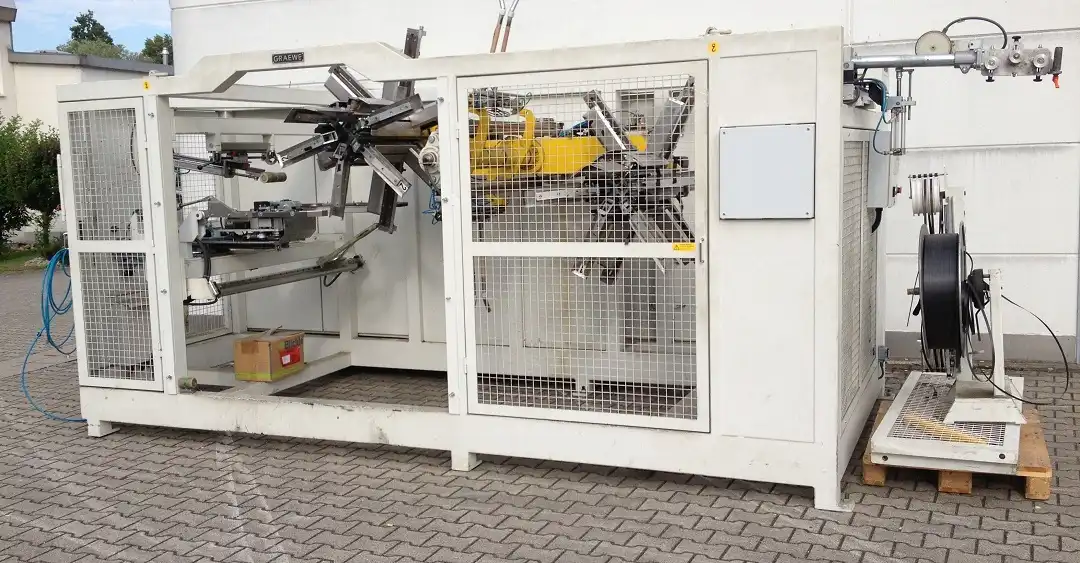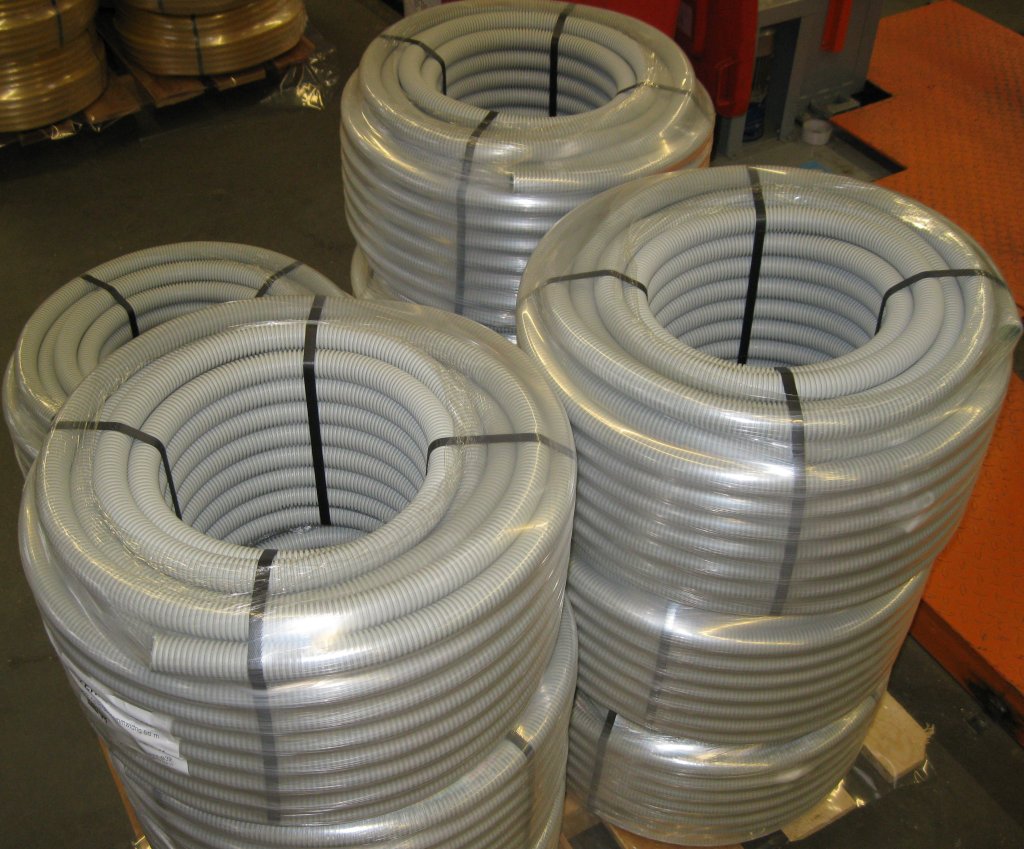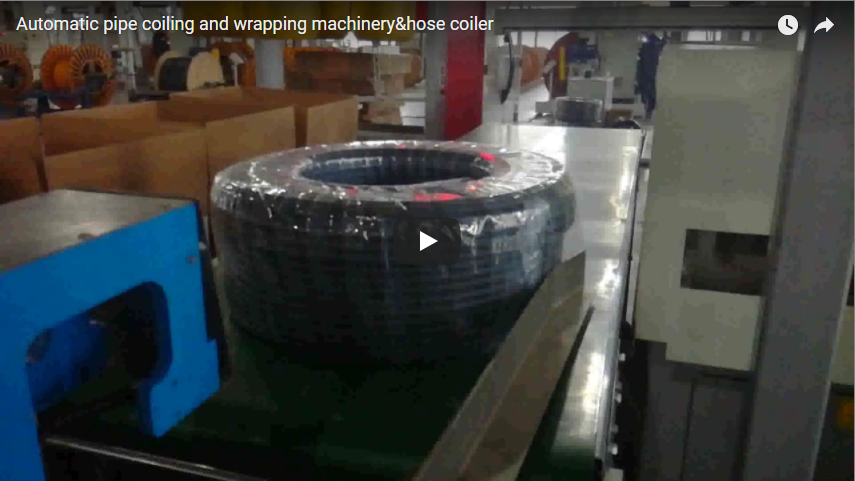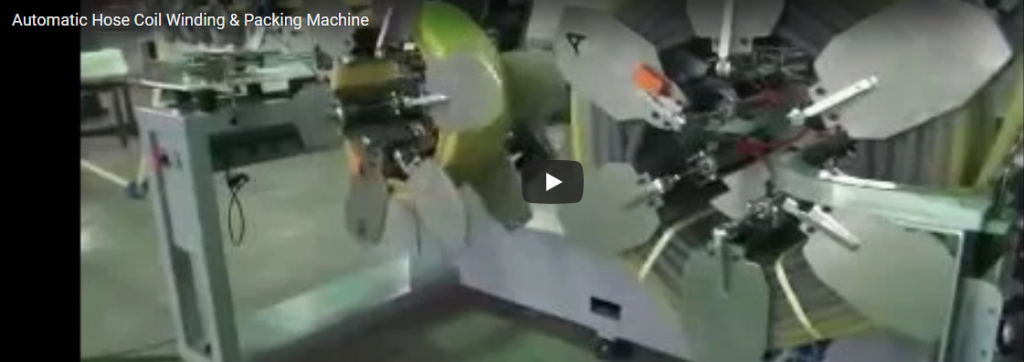Enhancing Production Efficiency: A Technical Guide to Automatic Hose and Pipe Coiling & Wrapping Systems
Manual coiling of hoses and pipes can be a labor-intensive, inconsistent, and potentially unsafe process in many manufacturing and fabrication environments. Automating this task not only addresses these challenges but also significantly enhances overall production throughput and product presentation. This guide delves into the technology, benefits, and key considerations surrounding automatic coiling and wrapping systems for hoses and pipes, providing insights for fabricators seeking to optimize their operations.
1. Understanding the Need: Challenges in Manual Coiling
Traditional manual coiling methods often present several drawbacks:
- Inconsistency: Coil diameter, tightness, and length can vary significantly between operators and shifts, impacting packaging and downstream processes.
- Labor Intensity: Manual coiling requires significant operator time and effort, contributing to higher labor costs and potentially leading to repetitive strain injuries (RSI).
- Speed Limitations: Manual processes inherently limit the speed at which products can be coiled and prepared for shipment or storage.
- Potential Product Damage: Improper handling during manual coiling can lead to kinks, scuffs, or other damage to the hose or pipe.
Automated systems are designed to overcome these limitations by providing consistent, high-speed, and reliable coiling and wrapping.
2. Core Technology: How Automatic Coilers Work
An automatic coiler typically functions through a sequence of synchronized steps:
- Product Infeed: The hose or pipe is fed into the machine, often guided by rollers.
- Length Measurement: A precision measurement system (e.g., encoder wheel) accurately tracks the length of the product being fed.
- Coiling Head/Mandrel: The product is wound onto a rotating coiling head or mandrel, which determines the inner diameter (ID) of the coil. The traversing system guides the product to create neat layers, controlling the coil width (Outer Diameter - OD).
- Automated Cutting: Once the preset length is reached, an integrated cutting mechanism (e.g., shear blade, rotary cutter) cleanly cuts the hose or pipe.
- Coil Ejection/Handling: The finished coil is automatically ejected from the coiling head, often onto a conveyor or accumulation table, ready for the next stage.
Control is typically managed via a Programmable Logic Controller (PLC) with a Human-Machine Interface (HMI) or touch screen, allowing operators to set parameters like coil length, speed, and pipe diameter.

3. Integrating Wrapping: The Coiler-Wrapper Combination
Many systems integrate an automatic wrapping function immediately following the coiling process. This typically involves:
- Transfer: The finished coil is transferred to a wrapping station.
- Wrapping: The coil is wrapped circumferentially with stretch film, PP/PE film, or other binding materials. This secures the coil, prevents unwinding, protects it from dust and moisture, and unitizes it for handling.
- Cut and Seal: The wrapping material is automatically cut and sealed.
This combination streamlines the end-of-line process, reducing handling and preparing the product for immediate storage or shipment.
4. Key Technical Specifications and Parameters
When evaluating automatic coiling and wrapping systems, consider these critical specifications:
- Product Diameter Range: The minimum and maximum outer diameter (OD) of the hose or pipe the machine can handle (e.g., 10mm - 65mm).
- Coil Inner Diameter (ID): The range of adjustable inner diameters for the coil (e.g., 200mm - 800mm).
- Coil Outer Diameter (OD): The maximum outer diameter the machine can produce (e.g., up to 1200mm).
- Coil Width/Height: The adjustable range for the width or height of the finished coil (e.g., 50mm - 400mm).
- Maximum Coil Weight: The weight capacity the machine can handle.
- Coiling Speed: The operational speed, often measured in meters per minute (e.g., up to 120 m/min), which directly impacts throughput.
- Material Compatibility: Suitability for specific materials (e.g., PVC, PE, PEX, corrugated pipe, garden hose, industrial hose).
- Control System: Type of PLC and HMI, ease of programming, data logging capabilities.
- Cutting Mechanism: Type of cutter and its suitability for the product material and wall thickness.
- Wrapping Material: Compatibility with desired wrapping films (stretch film, PE, etc.) and roll specifications.
- Power Requirements: Voltage, phase, and power consumption.
- Air Pressure Requirements: Required pressure and consumption for pneumatic components.
Note: Parameter ranges are examples and vary significantly between machine models.
5. Video Demonstration: Automatic Coiling in Action
The following video illustrates the operation of an automatic coiler and wrapping machine, showcasing the process from pipe infeed to the final wrapped coil:
Video illustrating an automatic coiling and wrapping sequence for flexible pipes.
6. Operational Benefits and Efficiency Gains
Implementing automated coiling and wrapping offers substantial advantages:
- Consistency and Quality: Produces uniform coils meeting precise length and dimensional specifications every time, improving product quality and customer satisfaction.
- Increased Throughput: Significantly higher coiling speeds compared to manual methods boost overall production capacity.
- Reduced Labor Costs: Frees up personnel from manual coiling tasks, allowing them to focus on higher-value activities. Often, one operator can oversee multiple automated lines.
- Enhanced Safety: Eliminates the risks associated with manual handling and repetitive motions.
- Material Savings: Precise length measurement minimizes product waste. Optimized wrapping reduces film consumption compared to manual wrapping.
- Improved Packaging: Securely wrapped coils are easier to handle, stack, and transport, reducing the risk of damage during logistics.
- Data Integration: Modern systems can often integrate with plant management software for production tracking and quality control.
7. Selecting the Right System: Considerations for Fabricators
Choosing the appropriate automatic coiling system requires careful evaluation:
- Product Characteristics: Define the full range of hose/pipe diameters, materials, flexibility, and required coil sizes.
- Production Volume & Speed: Match the machine's capacity and speed to your current and projected production requirements.
- Level of Automation: Determine the need for integrated wrapping, strapping, labeling, or palletizing. Various configurations exist, including horizontal coiling machines, depending on space and product requirements.
- Footprint and Layout: Ensure the machine fits within the available production space and integrates smoothly into the existing workflow.
- Integration Needs: Consider compatibility with upstream extrusion lines and downstream packaging or conveying systems.
- Budget: Balance initial investment cost against projected ROI from labor savings, increased throughput, and improved quality.
- Supplier Support: Evaluate the availability of technical support, spare parts, and service.
8. Practical Experience & Maintenance Insights
To ensure long-term performance and reliability:
- Operator Training: Proper training on machine operation, parameter setting, and routine checks is crucial.
- Regular Calibration: Periodically verify the accuracy of the length measurement system.
- Tension Control: Ensure proper tension settings during coiling to achieve neat coils without damaging the product.
- Cutter Maintenance: Keep cutting blades sharp and properly aligned for clean cuts. Regularly inspect for wear.
- Sensor Cleaning: Keep sensors (photoelectric eyes, proximity sensors) clean for reliable operation.
- Lubrication: Follow the manufacturer's schedule for lubricating moving parts like bearings and guides.
- Pneumatic System Checks: Regularly inspect air filters, regulators, and lubricators; check for leaks.
- Preventative Maintenance: Adhere to the manufacturer's recommended preventative maintenance schedule to minimize downtime.

Conclusion
Automatic coiling and wrapping systems represent a significant technological advancement for manufacturers and fabricators dealing with hoses and pipes. By replacing inconsistent and labor-intensive manual processes with automated precision, these machines offer tangible benefits in terms of efficiency, quality, safety, and cost savings. Careful consideration of technical specifications, operational needs, and integration requirements will enable businesses to select and implement the optimal solution, ultimately strengthening their competitive position in the market.






